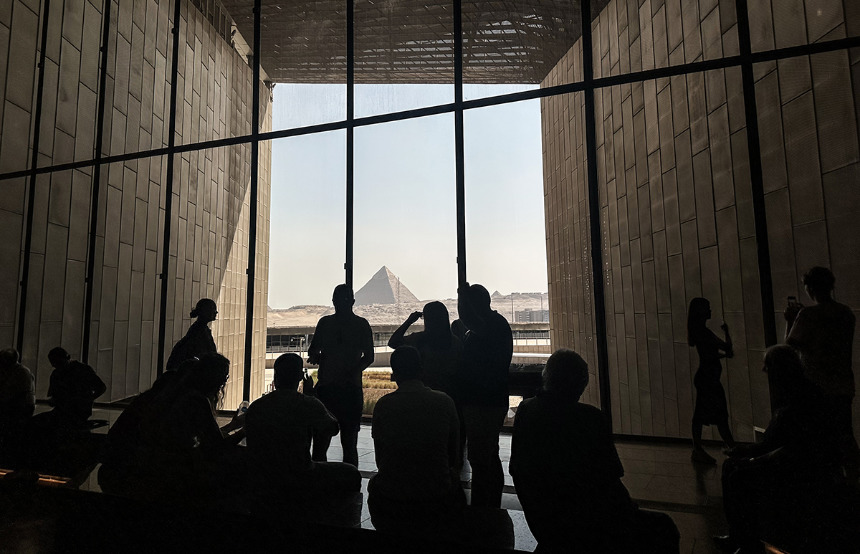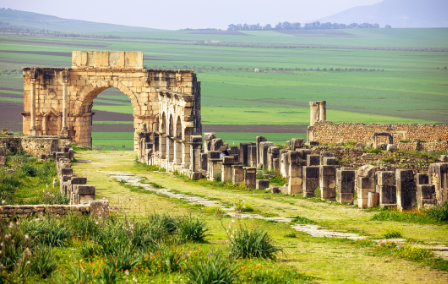Published 24th Oct. 2022
Reading time
Everybody loves a list. They allow us to organise otherwise overwhelming amounts of information, they appeal to our tendency to categorise things and they offer a sense of accomplishment when ticking things off. Travellers especially relish in compiling a catalogue of spots to conquer as they explore the world (see the prevailing ‘Travel Bucket List’ trend for proof). Thankfully, UNESCO (the United Nations Educational, Scientific and Cultural Organisation) know this better than anyone and have been assembling lists since 1978, with the inaugural one featuring some heritage heavyweights, such as the Galapagos Islands, the rock-hewn churches of Lalibela and Yellowstone National Park.
Today, the esteemed list features 1,154 UNESCO World Heritage sites, peppered across 167 countries, and has been divided into various sections: the classic list, the Intangible Cultural Heritage list, the Creative Cities list, the Biosphere Reserves list, the Global Geoparks list and the (rather niche) Atlas of the World's Languages in Danger list. A mélange of fascinating cultural, natural and scientific sites, the organisation aims to protect and preserve these places, deemed to be of ‘outstanding value to humanity’. The collection is constantly reviewed and around 30 new UNESCO sites grace the list annually, with 34 inscribed last year. Below we’ve handpicked our favourite new additions to the much-coveted list.
Latin America is renowned for its astronomical observatories, with Chile crowned as the international capital of astronomy and Peru touted as an out-of-this-world star-gazing destination. It appears that the same could be said over 2,000 years ago, as the Chankillo Archaeoastronomical Complex – situated in northern Peru – is the earliest known astronomical observatory in the Americas. The 13 stone towers are a far cry from the futuristic observatories found in the Atacama Desert, yet extraordinarily the placement of the structures is so precise that natives were able to ascertain the date, with an error margin of only a few days, by tracking the sun’s movements.

Italy is overflowing with artistic riches and cultural gems, so it’s no surprise that the boot-shaped nation boasts more UNESCO World Heritage sites than any other country (58 and counting). Alleged to have once been the richest city in Italy after Rome, Padua sits pretty on the Bacchiglione river to the west of Venice. The 14th-century frescoes that decorate eight religious and secular building complexes throughout the city have been recognised by UNESCO as representative of how fresco art developed as a form of creative expression during this period. As with any self-respecting Italian city, food is also an art form in Padua and its culinary traditions range from bigoli (thick spaghetti in duck sauce) and bollito misto alla Padovana (mixed meat stew), to Pazientina (Paduan layered cake) and Santantonino (nougat and hazelnut ganache).

Once an ancient salt trading hub on the East Bank of the Jordan River, the city of As-Salt is home to around 650 historically significant buildings, featuring a blend of Neo-Colonial, European Art Nouveau and local traditional architecture. Yellow sandstone buildings adorn the cluttered hillsides and are a standout feature of the town. The region is thought to have been inhabited since the Iron Age and was deemed a ‘Place of Tolerance and Urban Hospitability’ by UNESCO upon its inscription, in recognition of the generosity of its people and their traditions of hospitality towards visitors.
A natural addition to the list, Japan’s Southern Islands occupy 165 square miles across the southwestern part of the country. Amami-Oshima Island, Tokunoshima Island, the northern part of Okinawa Island and Iriomote Island have all been designated as UNESCO World Heritage Sites, providing protection for their unparalleled biodiversity and the high percentage of endemic species that call the coral-fringed isles home. The areas included on UNESCO’s list are uninhabited, meaning, unfortunately, they can’t be visited. However, some of Japan’s other Southwest Islands (such as Okinawa and Yakushima) offer a similar paradisiacal feel.

Described as a ‘living work of art’, the Sítio Roberto Burle Marx was designed and developed over a period of 40 years by landscape architect Roberto Burle Marx and is the first modern botanical garden to be added to the list. Located in western Rio de Janeiro, the garden contains over 3,500 species of plants (Brazil’s most representative plant collection) and draws on Modernist artistic themes. If you’re hoping to pack more than one UNESCO site into your trip, Brazil itineraries can also include visits to the thundering cascades of Iguacú Falls (inscribed in 1984) and the historic centre of Salvador de Bahia, Brazil’s first capital city (added in 1985).
Written by Luisa Watts
Practical advice and inspiration for your next trip

As Tom Holland (the esteemed historian, not Spiderman) so succinctly put it in the first edition of our magazine, Original Traveller, ‘Egypt is where tourism began’. And the next chapter in the history of tourism in Egypt is about to begin. We’re always looking for a reason to shout about this captivating country, and this November, we have the perfect excuse: the long-awaited opening of the Grand Egyptian Museum (GEM).
3rd November 2025 - Egypt Culture

Everyday life can be chaotic. Our favourite antidote? Escaping to one of the silent and sacred corners of the world. Whether hiking mystical mountains or observing ancient rituals, spiritual holidays offer a chance to reconnect and slow down. From the cloud-kissing monasteries of Meteora to the heart of Mexico’s Maya culture, read on to discover our favourite spiritual escapes around the world... Meteora monasteries, Greece Himalayas, India Yucatan Peninsula, Mexico Nairobi and Laikipia, Kenya Meteora monasteries, Greece Best for:
24th July 2025 - Culture

Any trip to Fes should include a day out to the Roman ruins of Volubilis, probably the largest and best-preserved ruins in Morocco. With scenery reminiscent of Russell Crowe’s homecoming in ‘Gladiator’ (more for the surrounding countryside than for the grisly welcome he got), Volubilis is a must-see for history buffs and lovers of picturesque vistas alike. Find out why you should visit in our Volubilis guide… 1.
23rd April 2025 - Morocco Culture

Our team of destination experts will get to know you and your unique requirements for your holiday

We work with you to build an ultra-personalised holiday itinerary with your choice of accommodation, experiences and activities

All of our holidays include little extras designed to make a big difference to your trip, from fast-tracking you through airport check-in and security to our network of local Concierges